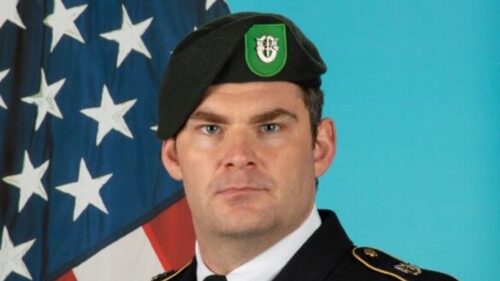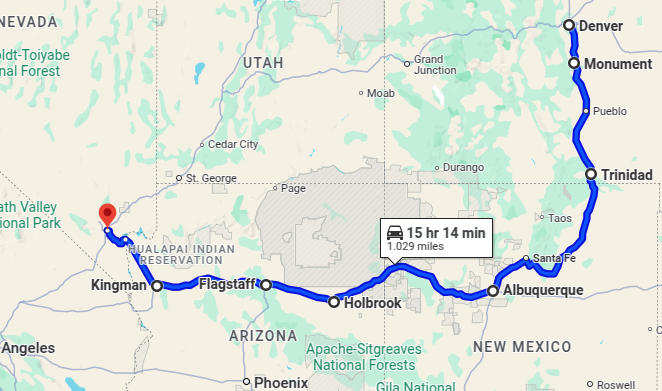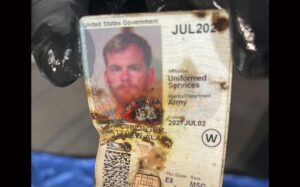The communications by Livelsberger in days leading up to his suicide say he was not trying to hurt anyone else, just protect himself and raise awareness about security risks and mistakes. His final message provided direct testimony about White House-led war crime policies from someone who was compelled to participate in them – testimony that came at such moral cost that he felt he had to take his own life to expose the truth.
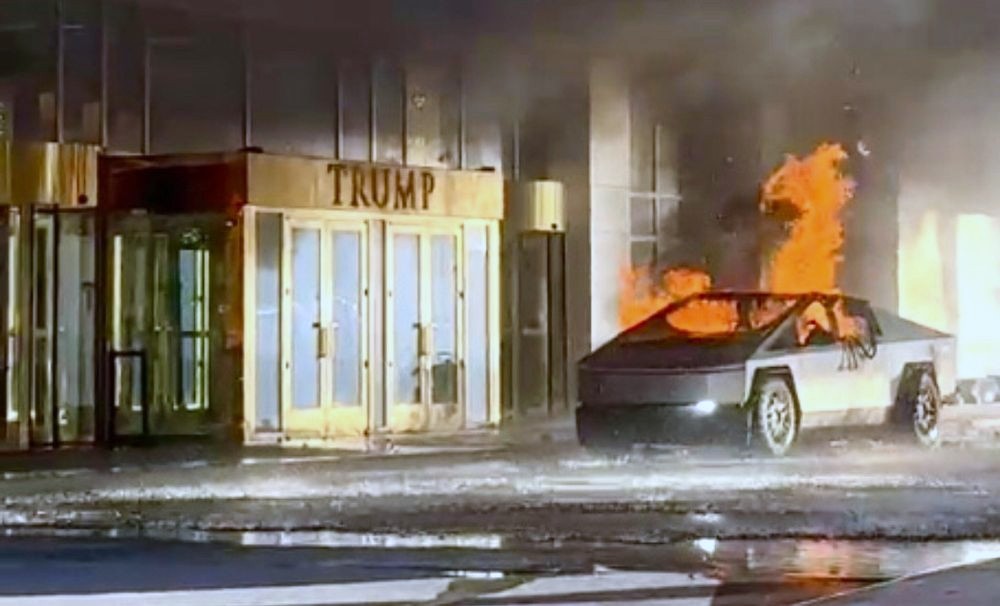
The following email was sent by him to retired U.S. Army intelligence officer Sam Shoemate, who then posted it to The Shawn Ryan Show.
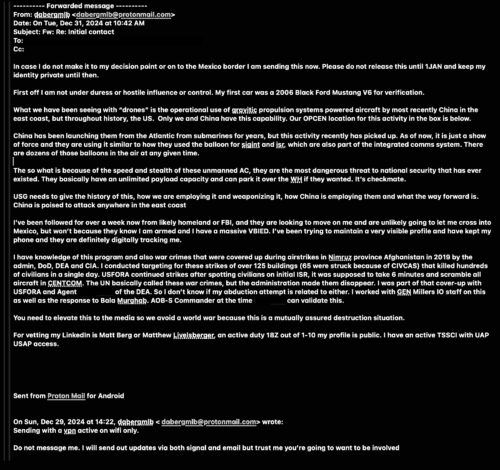
Livelsberger’s allegations directly contradict the official U.S. military narrative from 2019. While his final message includes references to personal fears and contingency plans, including potential escape to Mexico, the core of his testimony aligns with extensive documentation from UN investigations and Brown University studies about civilian casualties. His direct experience as a drone operator provides crucial firsthand evidence of how the military’s public claims were forced by Trump to diverge from operational reality.
Livelsberger’s testimony about civilian casualties is corroborated by detailed UN investigations, including a special report about May 2019 airstrikes in Afghanistan.
UNAMA received reliable and credible information to substantiate at least a further 37 more civilian casualties (30 deaths and seven injured), including 30 children and two women. It is working to further verify these civilian casualties. UNAMA has not been able to corroborate information concerning the additional 69 persons reported killed or injured.
In one incident on 5 May in Shagai village of Bakwa district, multiple reliable and credible sources reported that three children were killed when an airstrike impacted their home. After one strike hit close to the house, the father shouted to his family members to run away from the house before a second bomb was dropped on the house. Three young boys, aged between one and a half to seven years old, were unable to escape in time. UNAMA has verified the death of one of the boys, as well as the injury of another boy around 12 years old who was in a neighbouring house. UNAMA also received specific information about the injury of a girl around four to five years old and a boy around two years old, relating to the same incident, and is seeking to verify the case.
In another incident in the same area, multiple reliable and credible sources reported that 12 members of the same extended family were killed and injured when an airstrike hit their house. UNAMA verified seven civilian deaths (including five children) and three injured civilians (including two children). For two of the children, UNAMA has not yet been able to determine whether their current status is injured or killed as information was received from sources at different points in time.
During the mission to Bakwa district, the fact-finding team visited an impact site where an airstrike on a house resulted in five civilian casualties (three deaths, including two children, and two injured), according to multiple reliable and credible sources. According to witnesses, two aerial strikes were conducted. The first one reportedly damaged the house. A few minutes later when people from the surrounding area gathered to see what had occurred, a second airstrike hit the same location, causing the civilian casualties. In addition to interviewing elders from the area and a victim of that incident, UNAMA visually documented the impact of the strike during the visit to the site. It has verified four of the five civilian casualties reported from that specific incident (three deaths and one injured).
The U.S. military justified these strikes by claiming the targets were drug labs operated by Taliban fighters. At the core of the UN investigation was determining whether these were actually “criminal groups with connections to international drug trafficking networks” as opposed to militant fighters working for the Taliban.
The U.S. military case relied solely on distant drone surveillance to claim they only hit legitimate military targets with no civilian casualties. This remote-only assessment directly contradicted the overwhelming evidence gathered by UN investigators on the ground who visited the many bombed civilian homes and interviewed survivors.
Livelsberger’s testimony, as a decorated combat veteran and drone operator, thus completely destroys the remote-only assessments. His account reveals how operators witnessing war crimes were forced to work under Trump White House directives that had deliberately removed protection of civilians from airstrikes.
The number of Afghan civilians killed in air strikes carried out by the US and its allies has risen 330% since 2017, a US study says.
In 2019 alone, around 700 civilians were killed, the Costs of War Project at Brown University says.
It is the highest figure since the first years of the US-led offensive following the 9/11 attacks in 2001.
The group attribute the rising figures to the US relaxing its rules of engagement in 2017.
To put it plainly the moral burden on service members like Livelsberger was made unbearable by Trump giving orders to cover up obvious war crimes such as civilian casualties.
President Donald Trump has revoked a policy set by his predecessor requiring US intelligence officials to publish the number of civilians killed in drone strikes outside of war zones.
The significance of Livelsberger’s testimony thus lies in how it illuminates the systemic disconnect between official policy, an operator’s reality, and the horrible human cost. His account serves as a crucial bridge between three distinct types of evidence of war crimes: the official U.S. military stance claiming precise drone surveillance with minimal civilian impact, the UN ground investigations documenting extensive civilian casualties, and the quantitative data from Brown University showing a 330% surge in civilian deaths.
This triangulation of evidence reveals a critical pattern: as the Trump administration implemented two key policy changes (relaxing civilian protection rules in 2017 and revoking casualty reporting requirements in 2019) it created a compounding effect. Drone operators were simultaneously given broader operational latitude while facing institutional pressure to suppress evidence of civilian deaths. This policy framework effectively trapped operators like Livelsberger between witnessing civilian casualties and being required to maintain an official narrative denying their existence.
The implications reveal a systemic failure in military accountability that created an impossible moral position for service members. When drone operators were pressured to validate pre-determined conclusions about civilian absence rather than report observed reality, it not only compromised the integrity of military intelligence but also forced them to choose between their duty to truth and their operational obligations.
Livelsberger’s final communications and subsequent suicide thus represent more than personal tragedy – they serve as powerful evidence of how policy changes at the highest levels created operational pressures that both increased civilian casualties and corrupted the moral foundation of military service.
His decision to speak out, even at the calculated cost of taking only his own life, suggests the depth of moral injury inflicted on service members forced to participate in a system that prioritized operational flexibility over both civilian protection and truthful reporting. The devastating human cost of these policies extended beyond the civilian casualties in Afghanistan to claim the lives of the very service members tasked with carrying them out.
